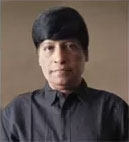
Maharashtra’s upcoming elections are shaping up to be a high-stakes battle over seat sharing and candidate selection. Political alliances face internal rifts and factional struggles, with parties wrestling over who gets the winnable seats and how to present a united front. As tensions rise, the heartburn within alliances could shape the outcome just as much as the electorate’s choice.
As Maharashtra approaches the upcoming elections, the political scene is rife with complications and uncertainties. The primary issues that are intensifying the political drama include the tricky dynamics of seat sharing, alliance negotiations, and the fraught process of selecting consensus candidates. These factors are contributing to internal conflicts across the board, with significant heartburn brewing in major alliances. From the Bharatiya Janata Party (BJP)-Eknath Shinde Shiv Sena coalition to the Maha Vikas Aghadi (MVA) involving Uddhav Thackeray’s Shiv Sena, the Nationalist Congress Party (NCP), and the Congress, everyone is navigating difficult waters. With all eyes on the polls, the complex task of balancing political egos, voter bases, and regional power structures is becoming increasingly difficult.
Seat sharing has become one of the most contentious issues ahead of the elections. The BJP, now allied with Eknath Shinde’s Shiv Sena faction after the latter’s split from Uddhav Thackeray’s camp, is facing tough negotiations. Historically, the BJP had played a junior role in the alliance with the Shiv Sena, but in recent years, it has grown stronger in the state, looking to assert itself as the dominant partner. This is particularly evident after the 2019 elections, where the BJP won 105 seats compared to the Shiv Sena’s 56. Now, with Shinde having carved out his own faction, there is intense pressure on both sides to get their share of the political pie.
The BJP wants to contest a larger number of seats, but Shinde’s faction is unwilling to let go of key constituencies, particularly in their strongholds in urban and rural Maharashtra. For example, in the crucial Mumbai and Thane belt — long regarded as a Shiv Sena bastion — Shinde’s faction is expected to demand a lion’s share of the seats. However, the BJP, which has been expanding its urban base in Mumbai, is eyeing several of these constituencies. This tug of war is likely to drag on till the last moment, as both sides need each other to present a formidable front against the MVA alliance, despite their internal friction.
The Maha Vikas Aghadi (MVA), comprising Uddhav Thackeray’s Shiv Sena (UBT), the Sharad Pawar-led NCP, and Congress, is also facing its share of challenges. After Ajit Pawar’s rebellion and his alignment with the BJP, the NCP is now split, complicating seat-sharing talks within the alliance. The Sharad Pawar camp, despite being weakened by the split, continues to hold sway over many key constituencies, especially in western Maharashtra. Here, the seat-sharing discussions are particularly thorny, with the Congress pushing for a higher share of seats after their 2019 performance, where they won 44 seats, even as they battle diminishing relevance in the state.
For example, the Pune district is a region where the NCP has traditionally dominated, but Congress is pushing to contest more seats in this belt, citing its cadre strength and voter base. Meanwhile, Uddhav Thackeray’s Shiv Sena faction is keen on maintaining control over its strongholds in Mumbai and Konkan. Each party in the alliance wants to secure as many winnable seats as possible, creating a tense and difficult negotiation process.
Consensus vs competence
In addition to seat sharing, the issue of selecting the right candidates is proving to be a major source of heartburn for all parties. A consensus candidate who can maintain party unity and win over the electorate is essential in every constituency, but internal divisions and rival factions often disrupt this delicate process.
For instance, in the BJP, the challenge lies in striking a balance between state leaders and the central command. In constituencies like Nagpur, where Union Minister Nitin Gadkari has long been a towering figure, there are already signs of friction between his loyalists and newer candidates who are favoured by the central BJP leadership. Similar struggles can be seen in Vidarbha, where senior BJP leaders have clashed over candidate selection, fearing that high-profile parachuted candidates from outside the region may alienate the local voter base.
The MVA is dealing with an even more complicated set of issues. Uddhav Thackeray’s Shiv Sena faction is pushing to field candidates loyal to the traditional Shiv Sena ideology of Marathi identity and Hindutva. However, the Congress and NCP, with their more secular platforms, are reluctant to give up seats where they have a strong local presence. This ideological tension is especially pronounced in areas like Aurangabad and Nashik, where the Congress and NCP are strong but Uddhav’s faction wants to contest more seats to capitalize on the Shiv Sena’s local appeal. As an example, in Nashik, both Congress and Shiv Sena claim to have strong candidates, making it difficult to arrive at a consensus.
In another striking example, the Congress has struggled to select a candidate for the Chandrapur seat, where local factionalism has led to public infighting. Senior Congress leaders have suggested parachuting in a high-profile candidate, but the local unit is demanding the nomination of a grassroots worker with stronger local connections. These disagreements, often involving prominent state leaders like Ashok Chavan or Balasaheb Thorat, risk weakening the party’s position in crucial districts.
The intense seat-sharing and candidate-selection process has stirred significant discontent across parties. Factionalism, which has long been a hallmark of Maharashtra politics, has deepened in recent months. Within the Shiv Sena, the split between Uddhav and Shinde continues to cause ripples, with local leaders switching sides and competing for dominance. The rebel Ajit Pawar faction of the NCP has also caused significant distress for the Sharad Pawar camp, especially in western Maharashtra, where the NCP’s hold has traditionally been strong. Many of Sharad Pawar’s loyalists view Ajit’s defection as a betrayal, leading to increasing tension within party ranks.
Even within the BJP, where the central leadership exerts strong control, there are signs of discontent. In regions like Vidarbha, local BJP leaders have expressed frustration over being sidelined in favour of candidates imposed by the party’s central leadership. These internal divisions are significant because they risk alienating key voter bases at a time when party unity is essential to contest the upcoming elections.
The road ahead
As election day approaches, these battles over seat sharing and candidate selection will only intensify. Negotiations within the alliances will likely go down to the wire, as every party seeks to maximize its political gains. The BJP and the Shinde faction will need to resolve their differences, particularly in the Mumbai-Thane belt, while the MVA must overcome internal divisions and factionalism to present a unified front.
Thus the upcoming elections promise to be one of the most unpredictable and hotly contested in recent memory. With alliances strained, party loyalties tested, and voter bases fragmented, the stakes are incredibly high. As parties scramble to navigate the minefield of seat sharing and candidate selection, the eventual victors will need to balance internal heartburn with the challenge of winning over an increasingly sceptical electorate.

A Column By
Raju Korti – Editor
The Resource 24X7
A Journalist With 4 Decades of Experience With Leading Media Houses.
